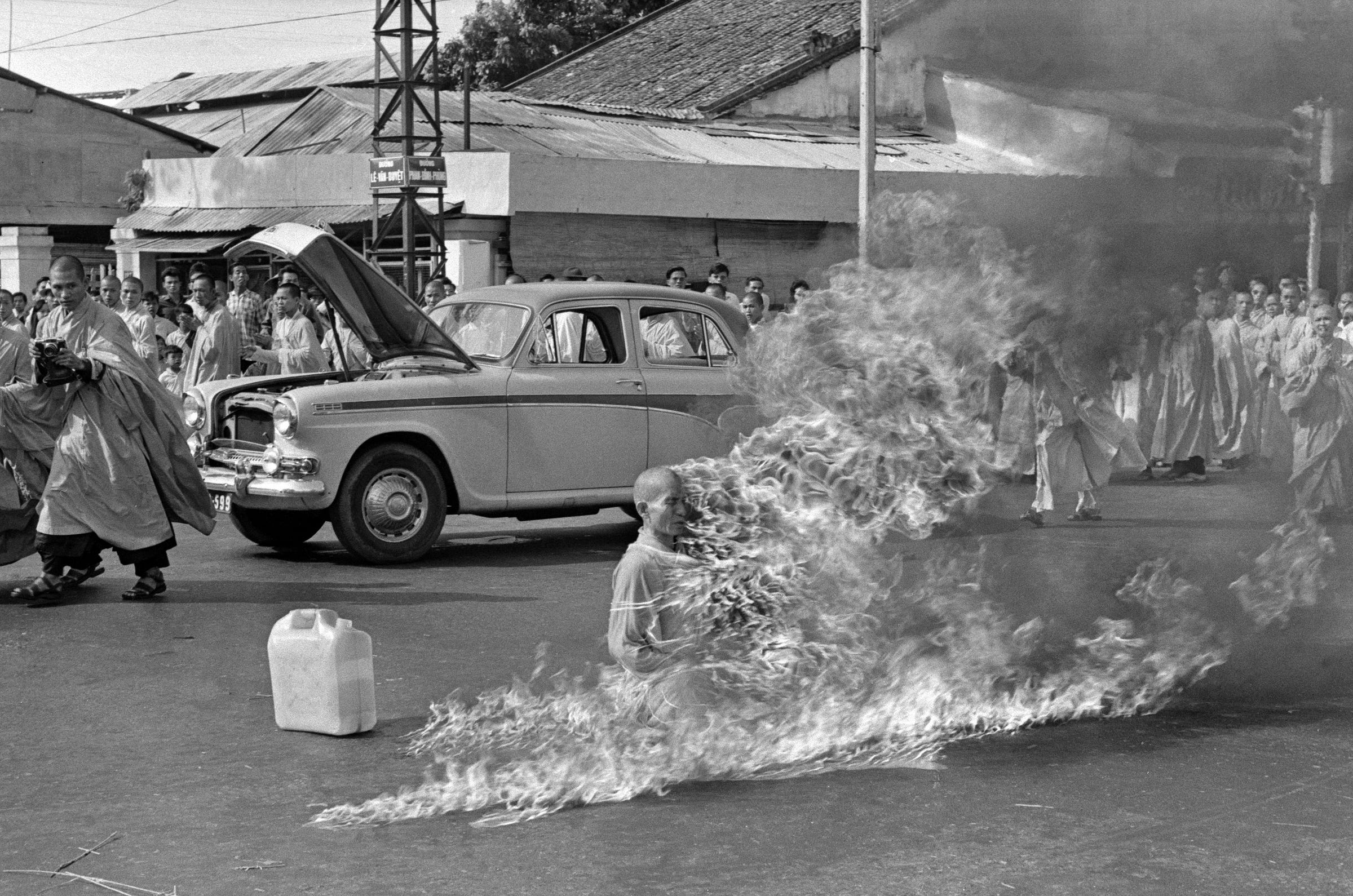The Dentist, The Anonymous Monk, and The Ultimate Protest
Never-before-seen alternate angles of the iconic "burning monk" photo.
Warning: This story contains graphic photographs. Viewer discretion is advised.
This photograph was taken by a Vietnamese dentist sixty-one years ago today.
Look familiar? It’s nearly identical to Malcolm Browne’s iconic photo of Thich Quang Duc, the Buddhist monk who set himself on fire during a protest in Saigon on June 11, 1963. But the dentist, Nguyen Van Thong, was positioned to the right of Browne, photographing from a slightly lower angle — a subtle, but notable difference. Here’s Browne’s version, which was moved by the AP…
Before the war, photography was just a side hustle for Nguyen Van Thong in Hanoi. When the conflict erupted, he fled to Saigon and began working as a photographer full-time for the South Vietnamese government.
“I was never sent to the frontline,” Nguyen Van Thong said. “My job was to document the political events in Saigon according to the demands of General Tran Thien Khiem My photographs and negatives were sent to him.”
Thankfully, on June 11, 1963, Nguyen Van Thong was shooting with two cameras. Feeling the weight of the moment, he pocketed one roll and shipped the rest to General Khiem.1
“My fingers may have been pressing the shutter, but inside me surged an indescribable emotion,” Nguyen Van Thong recalled. “I truly felt admiration. It was the action of a soldier, a ‘soldier’ of Buddhism fighting for peace for the nation.”
Nguyen Van Thong spent eight years in prison after the war. After his release in 1983, he taught photography in Saigon. Nguyen Van Thong’s “burning monk” photo was finally exhibited in Vietnam in 1990.
However, Malcolm Browne and Nguyen Van Thong weren’t the only photographers who documented Thich Quang Duc’s ultimate protest. Look closely at a different frame Browne made that day, seconds before the photo seen around the world — there’s a monk holding a camera on the far left.
This is the photo that anonymous monk made — a miraculous, alternative angle of the iconic, historical moment.
In this vintage print from the private collection of Benjamin Kelley, key details align with the photos taken by Malcolm Browne and Nguyen Van Thong from the opposite side: the plastic jerry can, the angle of the wind-blown flames, the line of monks. The anonymity adds to the horror.
During my months of research, I discovered another photo, likely taken by the same anonymous monk moments later…
This rarely-seen image, taken at the near-exact moment as those by Malcolm Browne and Nguyen Van Thong, shows the tipped jerry can and solitary flame on the left. The anonymous monk would have been standing inbetween Browne and Nguyen Van Thong when shooting this photo.
Vintage prints of these two photos were sold by RMY Auctions in January 2024. The same lot up for auction included this photo, capturing another completely different angle, this time from the backside of the parked car.
It appears as though the anonymous monk shot this photo first, then worked his way around the car, made the reverse angle then hustled to the front, ending up shoulder to shoulder with Nguyen Van Thong and Malcolm Browne.
Incredible.
The kind folks at RMY graciously shared scans of the backs of the prints with me, which offered some clues.
At first, I believed the anonymous monk was Quang-Minh. But it turns out that Quang-Minh was merely the name of a photo lab in Saigon that has long been closed. The search continues.
Here are the three versions…
President John F. Kennedy famously remarked, “No news picture in history has generated so much emotion around the world as that one,” upon seeing Malcolm Browne’s photo.
Had the President seen the other two, he’d have likely said the same.
“Послевоенная фотография в Юго-Восточной Азии,” золотой треугольник, March 31, 2015.











Iconic. Tragic. Thank you for the research and sharing these hugely important photographs.
Impressive. Each and every time you impress us!